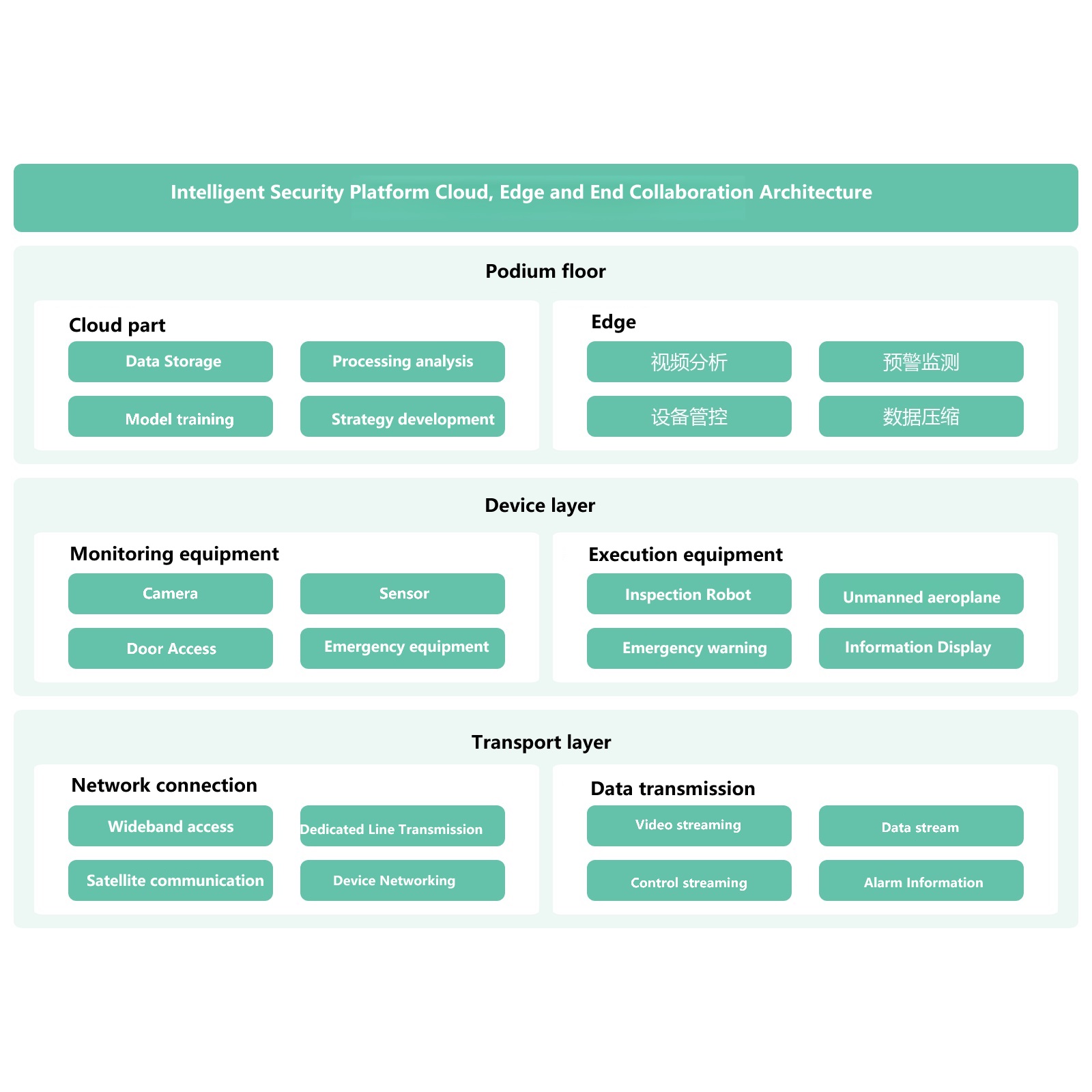Core Value
Smart security refers to an integrated public safety defense system that leverages next-generation information technologies—such as artificial intelligence, big data, and cloud computing—combined with video surveillance, access control, physical protection, and intrusion detection technologies. Intelligent security systems enhance public safety management, effectively respond to various risks and challenges, and provide enterprises with comprehensive protection, thereby improving operational efficiency and risk management capabilities.

Technical Features
- Real-Time High-Definition Surveillance: The smart security management platform deploys HD cameras for 24/7, seamless real-time monitoring of target areas, capturing every detail clearly and providing firsthand data for security prevention.
- Intelligent Behavior Analysis: Built-in AI algorithms automatically detect abnormal behavior—such as intrusion, loitering, or abandoned objects—within surveillance footage and issue instant alerts to improve proactive and precise security measures.
- Facial and License Plate Recognition: Using deep learning technology, the system quickly identifies faces and license plates from surveillance footage and cross-checks them with databases, providing strong technical support for management and tracking.
- Remote Monitoring and Management: Supports remote access via mobile apps or desktop software, allowing users to view footage, adjust camera angles, and maintain full control over security anytime, anywhere.
- Multi-Sensor Fusion: Integrates vibration, infrared, laser, and other sensors to comprehensively detect intrusion activities, ensuring accurate alerts with minimal false positives and improved system reliability.
- Smart Analytics and Alerting: Through big data analytics and machine learning, the system intelligently distinguishes real threats from false alarms and issues alerts based on threat levels, enhancing precision in threat prevention.

Application Scenarios
Commercial Complexes
- Smart Access Control: Combines facial recognition with mobile app-based remote control and intercom systems to enable contactless access.
- Unmanned Patrols: Deploys slow-moving autonomous vehicles and patrol robots to enhance patrol efficiency.
Industrial and Special-Purpose Scenarios
- Equipment Fault Prediction: Uses sensors to monitor equipment vibration and temperature, forecasting malfunctions and issuing early warnings.
- Hazardous Area Monitoring: Identifies risks and hazardous behaviors in sensitive areas like laboratories and hazardous material storage rooms.
- Biometric Authentication: Uses technologies like fingerprint and iris recognition for secure identity verification in high-security environments.

Business Advantages
- Deep Learning Models: Utilizes convolutional neural networks (CNNs) and recurrent neural networks (RNNs) to efficiently process images, video, and audio for facial recognition, behavior analysis, and anomaly detection—enhancing system intelligence.
- Real-Time Object Detection: AI algorithms enable real-time detection and tracking of objects such as vehicles, pedestrians, and suspicious items in video streams, ensuring timely and accurate surveillance.
- Multimodal Fusion: Combines computer vision and natural language processing to analyze video, audio, and textual data, significantly enhancing the system's alerting capabilities and decision support.